You are using an out of date browser. It may not display this or other websites correctly.
You should upgrade or use an alternative browser.
You should upgrade or use an alternative browser.
cqtek
1000+ Head-Fier
Pros: Good power.
- Warm, flat sound.
- Versatility.
- Design and elegance.
- Great ease of use.
- Supports the best Bluetooth codecs.
- Warm, flat sound.
- Versatility.
- Design and elegance.
- Great ease of use.
- Supports the best Bluetooth codecs.
Cons: It's not as powerful as stated.
- The difference between low and high gain is small.
- Low gain is very powerful, which limits the use with IEMS and sensitive and/or low impedance earbuds. As a consequence the potentiometer travel is very small, limiting its accuracy.
- The sound via Bluetooth is not as good as via USB DAC/AMP.
- The sound is filtered between the line input and other modes.
- The difference between low and high gain is small.
- Low gain is very powerful, which limits the use with IEMS and sensitive and/or low impedance earbuds. As a consequence the potentiometer travel is very small, limiting its accuracy.
- The sound via Bluetooth is not as good as via USB DAC/AMP.
- The sound is filtered between the line input and other modes.
Introduction
xDuoo was one of the first brands I reviewed. Today I am very happy to review a new product from this prestigious company. From the very beginning, years ago, back in the days of the X2 and X3 DAPs, when I thought of xDuoo, I associated the brand with power. A lot has changed in a few years, even the logo. Today, xDuoo is seen as a more modern company, whose image and design is improving day by day. What hasn't changed is that initial sense of power. As an example, the product I am going to analyse in this review: the XP-2Pro is the new DAC/headphone amplifier/Bluetooth receiver, which replaces the initial XP-2 version. And one of its improvements is the increase in power: 300mW @ 32 Ω, up from 245mW @ 32 Ω, in the old model. 55mW is quite a mouthful, and you can't call it uncontrolled power, as the THD+N is much lower: 0.001% @1KHZ versus 0.008% @1KHZ in the old model. Among other improvements, virtually all current Bluetooth codecs have also been added and the supported sampling rate has been extended to 384kHz for PCM and 256 for DSD. Another clear improvement, however, is the design and beauty of the current model, in keeping with the improved image I mentioned earlier. Let's take a look at what's good about this attractive and powerful portable audio device.

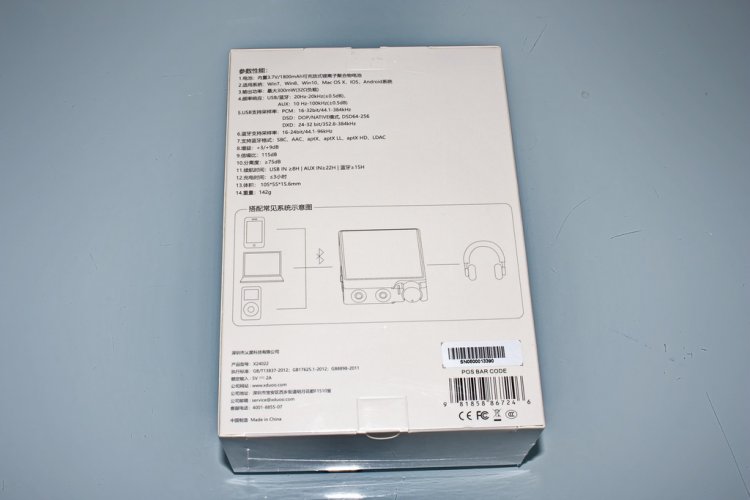
Disclaimer
xDuoo, offered me this model, in exchange for writing an honest review. I want to make it clear that all my opinions written in this review have not been conditioned by this fact, nor will I ever write anything that I do not really think or feel here. I will only write about my personal opinion in relation to the revised product.


Specifications
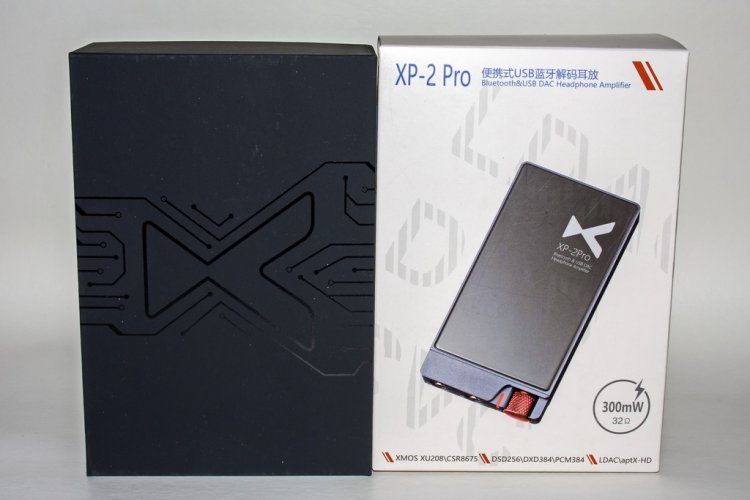

Packaging
The xDuuo XP-2Pro comes in a sealed, light grey plastic box with dimensions of 171x118x55mm. The top side shows a real photo of the product and already highlights its high power, exposing those 300mW at 32Ω, inside a circle located at the bottom right. At the base of the top and side faces, the product features are displayed. On the side are two stickers with QR codes and a warranty seal whose information is stored under a surface that appears after scratching it. The back side shows the specifications in Chinese, an operating diagram, as well as brand information and a web link. After removing this cardboard wrapping, a completely black, matt box appears, with the logo inscribed in large size on its upper side. Under the lid is the XP-2Pro, encased in a thick, dense foam mould, also black. Beneath it are the rest of the cables and brochures, in short, the complete contents:
The packaging follows this line of modernisation, with a more eye-catching, albeit restrained, design. The accessories are scarce, just three cables, just enough. The cables are not very special, typical connectors, in classic black plastic. They are too common. I would have preferred braided cables, more flexible, which would have added a distinctive and unique touch. The classic rubber bands used to attach to the DAP or SmartPhone are missing.
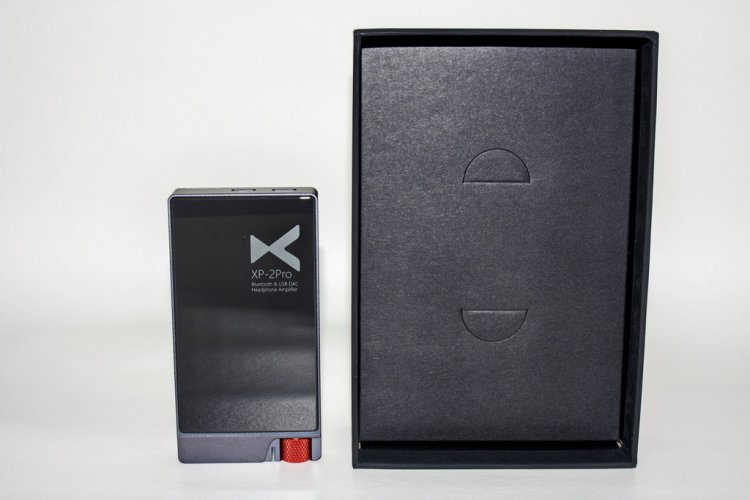
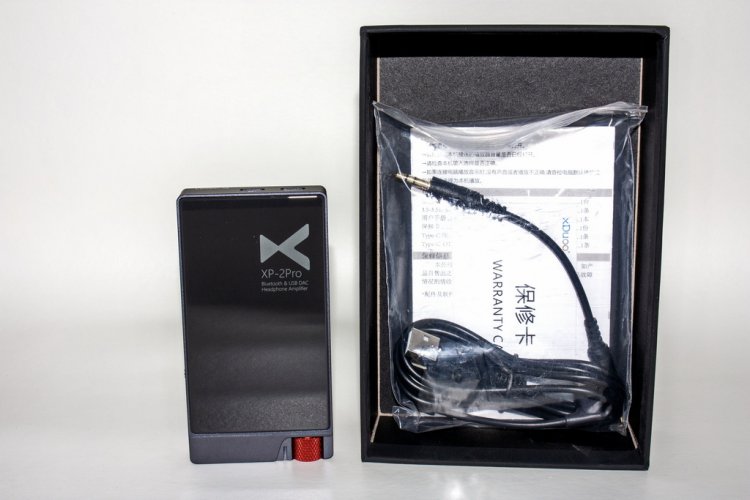
Construction and Design
The xDuoo XP-2Pro is a 105x55x16mm tablet, with a weight of 142g. It is made of high-strength aluminium alloy, dark grey in colour, with a textured surface. It has two 2.5D Glass protective panels. On the upper side, in the right corner, the logo, model and product description are shown: "Bluetooth & USB DAC Headphone Amplifier". On the other side, there is the NFC logo, the logos of the respective certifications, as well as where it was manufactured (China) and the link to the website. On the front edge is the heavily textured red potentiometer, embedded inside the body of the pickup. The pot has a small inscribed dot to indicate its position. To its left is the multi-coloured LED. It is rectangular but only two of its sides are visible, like a square. Below it, there is a small inscription with the power-on symbol in white ink. Continuing to the left, there is the 3.5mm line in/out, gold-plated. Below, to its left is another small white logo indicating the 3.5mm line input/output. Finally, on the far left side of this face is the gold-plated 3.5mm headphone output with its respective indicator in white ink in the lower left corner. On the left side, from front to back, there is an input selection button, a textured switch for gain selection, a play/pause button, and in the bottom corner, 5 holes under which the microphone is located. Each of these controls is marked with white lettering. On the rear side there are two USB Type-C female connectors. The one in the middle is the USB connection interface, while the one in the corner is the charging interface. Both are identified by white lettering. Also, the serial number is shown on this side. The right side face has nothing on it and is completely smooth.
The top and bottom sides are not completely protected by the 2.5D glass, but on the front side it is released and this edge has a slight tapering shape, symmetrical on both sides.
The construction is really solid and the 2.5D glass gives it an improved smoothness and beauty compared to the first version. Of course, that big red power button stands out, which is a plus point in its revamped and more attractive aesthetics. Although its size is not large, the current trend for this type of product is for its dimensions to be smaller. But if this were the case, perhaps its power and autonomy would not be so remarkable.
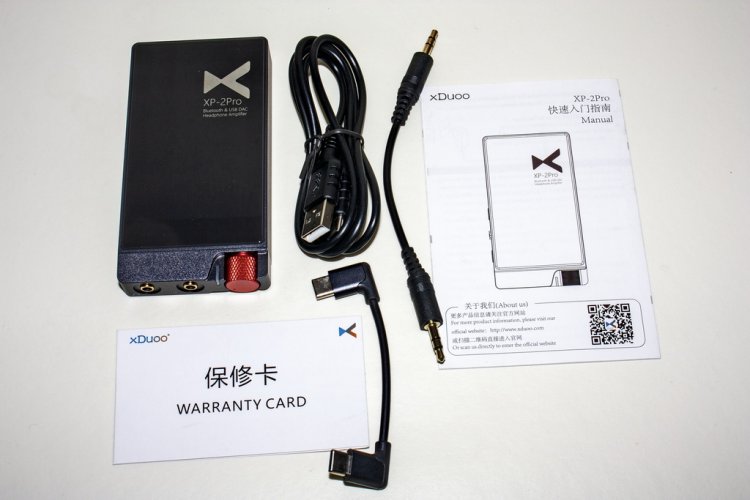

Connectivity
The xDuoo XP-2Pro has several functions:
As a Bluetooth receiver/headphone amplifier: In this mode, the XP-2Pro can be connected to a Bluetooth source. It has NFC function, so it can be connected after bringing both devices in close proximity. The supported audio codecs are SBC, AAC, aptX, aptX LL, aptX HD and LDAC. The chip used for this purpose is Qualcomm's CRS8675, which supports Bluetooth 5.0.
As USB DAC/headphone amplifier: Thanks to the XMOS XU208 USB receiver chip, the XP-2Pro can be connected as a USB DAC, supporting up to 32bit/384kHz in PCM mode, 32bit/352.8kHz in DXD mode and DSD256. It is compatible with Win7/8/10, MAC, iPhone/IOS and Android. For PC connection, a driver is required, which can be downloaded here.
https://drive.google.com/drive/folders/1VV4LN2tjPX7zKIa6ptGv2kxxIdnir-qv
It is an ASIO driver, thanks to which we will be able to enjoy music without any interference.
Connected to a Smartphone, it will be necessary to choose, in the playback APP, that the audio output is through the XP-2Pro.
As a headphone amplifier, via its line input: if a cable is connected via the line input, the XP-2Pro can be used as a pure amplifier, taking advantage of its high power and ultra-low THD value (0.0009% @1KHZ).
As a source using the line-out: Finally, in USB or Bluetooth modes, the XP-2Pro converts its alternate connection as a line-out, so you can connect it to another device or to self-amplified speakers.


Operability
The operation of the XP-2Pro is quite simple. It is switched on in the classic way, by turning the potentiometer clockwise, after passing the safety anchor. It should be noted that, due to the high power of the device, the pot must be moved very carefully, especially if IEMS or low-impedance earbuds are connected, so as not to damage them, even at low gain.
By pressing the "Input selection" button, you can switch between the different operating modes:
It has a switch to deactivate/activate the high/low gain. This varies between +3 dB/ +9 dB.
The next button is the Play/Pause/Bluetooth Pairing button: Connected via Bluetooth, this button allows to stop/reset the playback, by a short press. If pressed for 3 seconds, it forces the device to enter pairing mode. During this state, the light flashes blue. When the connection is established, it remains steady blue. The selected codec is shown by the colour of the LED:
The Bluetooth name of the device is XP-2 pro. You can quickly connect using NFC technology by activating the NFC option on your smartphone and bringing it close to the XP-2Pro's NFC logo. The device remembers the last mode after switching off and on, as well as the last Bluetooth connection. In case you want to pair it with another device, press the play/pause button for 3 seconds to put it into pairing mode.
In USB mode, the LED may change colour, depending on the sample rate played:
When the battery status is below 20%, the LED lights steady orange. During charging (recommended to be off) the LED lights red until fully charged, signalling green at that time.
It is recommended to use a charger that provides a minimum of 1A at 5V. It takes at least 3 hours to fully charge. If PC USB is used, it will take 4 hours. As it has a dedicated charging port, it can be charged even while it is running, but it will take much longer to charge. However, it is strongly recommended that it should be charged when switched off.
Finally, if it is not going to be used for a long time, it is advisable to charge it every half a year, to avoid damaging the battery.
In my opinion, the operation in relation to other DAC/AMP/Bluetooth products is somewhat different. There are some devices whose switching between Bluetooth and DAC is automatic. Here it is necessary to press a button to make the switch. Also, the high power at low gain limits the volume accuracy very much. The operating range of the potentiometer is limited to a quarter turn and beyond the 12 o'clock position, the power developed for most IEMS and earbuds is more than sufficient, which limits the operation in this respect.


Measures
According to the specifications, the power of the xDuuo XP-2 Pro is 300mW at 32Ω, which means an output voltage of 3.1V. According to my measurements made with an oscilloscope, to verify the quality of the waveform over the whole frequency range (even if only by eye), I have been able to verify that the maximum voltage obtained for 32Ω was 2.24V, which means an RMS power of 160mW, which is far from the declared power. It seems clear that the OpAmp are not capable of supplying all the current required for such a low impedance.
I have been able to verify that the values are the same, whether connected as a DAC to a PC or connected as a pure amplifier.
My tests as an amplifier have been carried out with a S.M.S.L Sanskrit 10th MKII DAC, which provides an output of 2.1V and the EarMen TR-Amp used as a DAC, which provides an output that can vary between 2V and 3.2V. In no case, even using a 3.2V input, has the output increased from what is shown in the measurements (that 2.24V).
32 Ω High Gain, Max Volume

32 Ω High Gain, No Distortion

32 Ω Low Gain, Max Volume

32 Ω Low Gain, No Distortion

The no-load voltage measurements were 2.92V at low gain and 3.56V at high gain. As you can see, the difference is not very big. It would have been desirable that the voltage at low gain would have been much lower, in my opinion a value between 1v and 1.5V would have been sufficient, so that the accuracy of the potentiometer would have improved. Actually, the range of movement for IEMS and normal earbuds is very small, just a little more than a quarter turn, being generous.
No Load, High Gain, Max Volume

No Load, High Gain, No Distortion

No Load, Low Gain, No Distortion

Below you can see the rest of the measurements with different impedances.
100 Ω High Gain, No Distortion

100 Ω Low Gain, No Distortion

240 Ω High Gain, Max Volume

240 Ω High Gain, No Distortion

240 Ω Low Gain, No Distortion

320 Ω High Gain, Max Volume

320 Ω High Gain, No Distortion

320 Ω Low Gain, No Distortion

620 Ω High Gain, Max Volume

620 Ω High Gain, No Distortion

620 Ω Low Gain, No Distortion

As for the difference between channels, it is around 0.6dB with the potentiometer set at 10 o'clock and around 0.5dB at 12 o'clock. It seems clear that the difference is greater at lower volumes and although I don't find it very exaggerated, it does exist.

Finally, it should be noted that when used as an amplifier, the source selection button must be toggled to choose between line input, USB or Bluetooth. Well, with the line input connected, even when in USB or Bluetooth input selection, the line input signal can still be heard, albeit at a lower volume. This means that the switching is not complete.
Sound
In my opinion, xDuoo has the particularity to make the already warm sound of AKM DACs neutral. This time, the neutrality is not so great. However, I think that its profile, apart from being clearly flat, is also natural and balanced, but with a tendency towards warmth. In this way, the sound is drawn without fuss, without glare, but not nuanced, with a neutral tonal balance in its clarity, which does not attract too much attention, because it does not particularly stand out in the mid or high range. I do perceive a superior punchiness in the low end, though. This is not an emphasis as such, but a sense of a greater delivery of physical power, which gives an extra weight and energy, but without any hint of colouring. On the contrary, the low end feels with a very deep presence, which favours a greater sensory perception of the bass. However, its virtue remains a very natural sound, which does not fall on the analytical side, with a very slight darkness, the result of the classic silky and velvety sound of AKM chips. In this way, the shelling of detail is good, but it's not characterised as a very critical sound in that respect, nor is it overly lavish (AKM Velvet Sound, remember...). This is something that can be perceived when pairing analytical IEMS; at that point, the XP-2Pro manages to sweeten that capability, but without omitting it, making the sound friendlier, less profiled and silkier, but without becoming too smooth.
The other virtue is the sense of power and energy this unit delivers to the sound. Previously, its footprint in the low end has been highlighted, something that translates into a powerful and captivating punch. In this way, the sense of dynamics is remarkable, but without feeling out of control in the high end. This level of energy is transmitted above all in the lows, to a lesser extent in the mids and is hardly felt in the highs, which never lose their naturalness, but do not gain in brightness either. Thus, one of the first things that strikes you when connecting headphones to the XP-2Pro is this feeling of power delivery. You have to be careful with the sensitive IEMS and start from the minimum volume and work your way up gently. Perhaps it would have been convenient if the gain selector allowed for a larger jump in volume, as for sensitive and/or low-impedance headphones, the volume action range is only a quarter turn, which makes it difficult to adjust the volume precisely.
Its use as a Bluetooth amplifier is characterised by its power, but the sound quality is more limited. I find a noticeable difference between the sound used as a DAC, than as a Bluetooth receiver. Using my Xiaomi Redmi Note 8 Pro, I can choose practically all available audio codecs, 32-bit depth and the highest transfer rate 990kbps/909kbps. But, even so, the audio quality via Bluetooth, does not reach the level of fidelity, cleanliness, clarity and definition offered by the physical connection. I have also tested with other DAPS in my collection, such as the HiBy R3 Pro (LDAC Audio Quality), with the same result. As a first impression, the feeling is that the wireless sound has a hint of distortion and its background is not as dark and clean, something that limits the sense of resolution. After switching to use as a DAC, the sound improves and its quality is that of a DAC of its level, rivalling any similar device.
However, the best way to improve the Bluetooth connection is to reduce the volume of the transmitter and use the full power of the xDuoo and the increased travel of the potentiometer. In this way, the negative effects of Bluetooth transmission seem to be limited and the sound quality is more even.
By connecting a DAC to the line input (I've tried the S.M.S.L Sanskrit 10th MKII and the EarMen TR-Amp), the XP-2 Pro retains much of its warm personality. It can only change the power feel at the same volume. Using a DAC as line input, at the same volume, the power is slightly higher. Using the TR-Amp, whose profile is cooler and more analytical, you can get a very slight sense of clarification in the sound. However, the profile of the XP-2 Pro is still predominant. This means that this amp is not very neutral and is capable of imprinting its own particular character to a large extent, for better or worse.


Comparisons
Qudelix-5K
I can't hide the fact that the Qudelix-5K is one of last year's favourite devices. Incredibly versatile for its size, it has two audio outputs: SE and Balanced, a clothes pin and a fantastic APP to control it. The XP-2Pro is quite a bit bigger and its battery doesn't seem to last much longer, but then again, it will depend on how much use you make of it. This one can be used as a pure amplifier and has NFC, although it lacks balanced output. Both are capable of using the same Bluetooth codecs, while the 5K uses the Qualcomm QCC5124 chip, the XP-2Pro uses the CSR8675. As DACs, the 5k uses two SABRE ES9218Ps and the XP-2Pro uses an AKM AK4452. It is clear that the xDuoo is more powerful because of its SE output and, on paper, it should also be more powerful than the Qudelix because of its balanced output (300mW @ 32Ω of the XP-2Pro versus 240mW @ 32Ω of the 5K). But, in reality, my measurements show otherwise. While the 5K does deliver what is specified, even more, the Xduoo does not, falling behind in overall power between SE vs Balanced. It's also worth remembering that to enjoy the 5K's Dual DAC, its balanced output must be used. Finally, the 5K has a maximum DAC resolution of 96kHz/24 bit and does not play DSD, while the XP-2Pro goes up to 384kHz/32 bit and is capable of playing DSD64-256. Another limitation of the 5K is that it does not have an ASIO driver, while the xDuoo does.
However, the Qudelix-5K has an APP that can be connected to any smartphone, which allows for a superior and accurate configuration, allowing you to control a large number of parameters, gain, output modes, filters, even a 10-band EQ.
In terms of sound, comparing the two via the SE output, the 5K has faster and more accurate bass, while the XP-2Pro's performance still delivers superior energy, slightly more depth and greater punch.
In the mid-range, the cooler, more analytical profile of the 5K is noticeable. Its vocals are not as juicy and full-bodied as in the XP-2Pro. They sound thinner, but also with a higher level of detail and slightly more presence, while the xDuoo has the silkier, more velvety feel of its AKM chip.
In the high end, the xDuoo's more punchy bass seems to have a superficial, but minimal effect on the treble in genres such as electronic music. This is not the case with the Qudelix, where they are reproduced more freely, but also in a more pronounced way, somewhat harsher, comparatively speaking. Even so, the smallest micro details and nuances seem to reveal themselves more clearly on the 5K, although the difference is not very big, just enough.
The soundstage seems to be recreated with better three-dimensionality and openness in the 5K, while the XP-2Pro's greater smoothness coheses the sound with greater fluidity, but less separation. The more analytical character of the Qudelix offers more finesse in the notes and a little more air between them, something that allows the silence and its background to be darker.
In reality, the distance between the two products, in terms of SE output, is due more to the profile of each product than to a clear qualitative leap between the two, which I would say is non-existent.
If the source is a Bluetooth device, to use the xDuoo in the best conditions, my advice is to reduce the output volume on the source, to improve the audio quality. With the Qudelix this does not happen and the signal is always clean throughout the volume range of the source. I have set my smartphone to the best LDAC quality (990kbps and 32 bits), for both devices, when testing. Sound-wise, the 5K proves its superiority in this respect, offering higher fidelity, accuracy and resolution, with a lower sense of distortion, more depth, better three-dimensionality and scene. With the xDuoo, the feel is improved by lowering the volume of the source and taking advantage of its large potentiometer travel. And while the sound is quite good, it feels a little more limited than the Qudelix, whose quality does not seem to diminish when used as a DAC.


Conclusion
The xDuoo XP-2 Pro is a versatile all-in-one product (DAC/AMP/Bluetooth receiver). Its current design has changed and improved for the better, with a much sleeker, newer, eye-catching logo and an image that combines different beautiful shades of grey, glazed surfaces, with red potentiometers. This gives it a very striking, yet elegant presence. On the other hand, the XP-2 Pro is still a somewhat oversized pickup, considering the current trend for this type of product, an issue that limits its portability, but this is understandable given its battery and power.
What is missing is a balanced output and a better ratio between low and high gain, which would improve the travel and accuracy of its potentiometer.
In terms of power, the device is very capable, but not as much as the specifications indicate. This is, on the other hand, more common than is desirable for many portable audio products.
If we evaluate its sound, both as a DAC and as an amplifier, its sound is warm and flat, with a lot of personality in the low end and a great sense of power. When used as a Bluetooth receiver, its quick and easy connection via NFC, its ability to control playback and its built-in microphone are worth mentioning, although its size and weight are not the most suitable for use during telephone conversations. In this mode the sound suffers slightly, being distinguishable and inferior to the great quality it provides in the other modes, but, even so, of a good quality.
In short, the xDuoo XP-2 Pro is a remarkable and powerful product, very useful for multiple uses, but it needs to polish some details to be considered as completely rounded or excellent. However, xDuoo will certainly be able to take advantage of the great potential available.
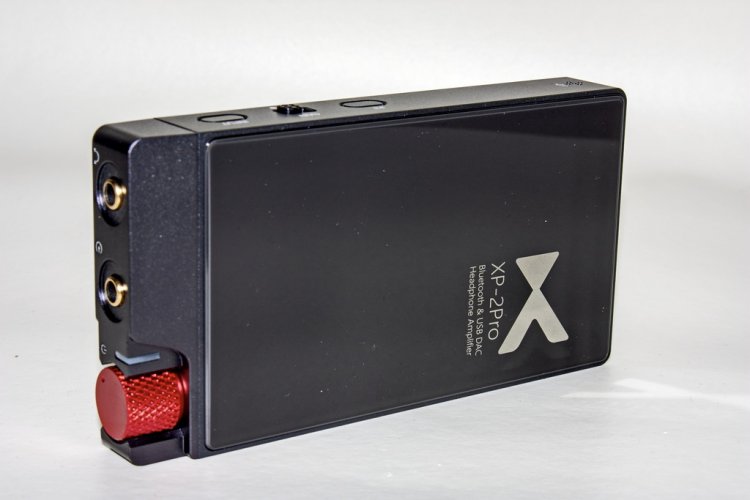

Headphones and Sources Used During Analysis
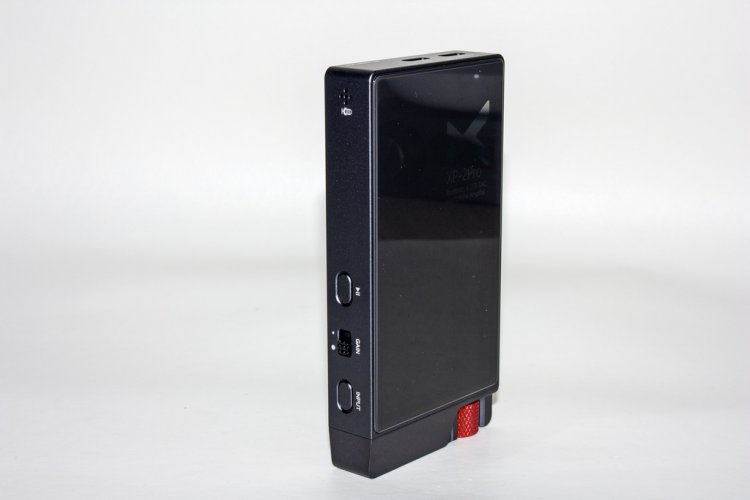
Ratings

Purchase Link:
https://www.xduoo.net/product/xp-2-pro/
You can read the full review in Spanish here:
https://hiendportable.com/2021/02/21/xduoo-xp-2pro-review/
xDuoo was one of the first brands I reviewed. Today I am very happy to review a new product from this prestigious company. From the very beginning, years ago, back in the days of the X2 and X3 DAPs, when I thought of xDuoo, I associated the brand with power. A lot has changed in a few years, even the logo. Today, xDuoo is seen as a more modern company, whose image and design is improving day by day. What hasn't changed is that initial sense of power. As an example, the product I am going to analyse in this review: the XP-2Pro is the new DAC/headphone amplifier/Bluetooth receiver, which replaces the initial XP-2 version. And one of its improvements is the increase in power: 300mW @ 32 Ω, up from 245mW @ 32 Ω, in the old model. 55mW is quite a mouthful, and you can't call it uncontrolled power, as the THD+N is much lower: 0.001% @1KHZ versus 0.008% @1KHZ in the old model. Among other improvements, virtually all current Bluetooth codecs have also been added and the supported sampling rate has been extended to 384kHz for PCM and 256 for DSD. Another clear improvement, however, is the design and beauty of the current model, in keeping with the improved image I mentioned earlier. Let's take a look at what's good about this attractive and powerful portable audio device.


Disclaimer
xDuoo, offered me this model, in exchange for writing an honest review. I want to make it clear that all my opinions written in this review have not been conditioned by this fact, nor will I ever write anything that I do not really think or feel here. I will only write about my personal opinion in relation to the revised product.


Specifications
- DAC: AKM AK4452
- Bluetooth chip: Qualcomm CSR8675
- Bluetooth version: Bluetooth 5.0. Supported codecs: AAC, SBC, aptX, aptX LL, aptX HD, LDAC
- Output power: 300mW @ 32 Ohm
- Recommended output impedance: 16 - 300 Ohm
- Supported sampling rate: USB PCM : 16-32bit/44.1k-384kHZ DSD64-256
- THD+N: USB: 0.001% @1KHZ AUX IN: 0.0009% @1KHZ
- Adjustable gain: +3 dB/ +9 dB
- Crosstalk: ≥75dB
- Frequency response: USB/Bluetooth: 20Hz - 100kHz (+/-0.5dB) AUX:10Hz - 100kHz (+/-0.5dB)
- Battery capacity: 3.7V 1800mAh
- Battery life: AUX IN: 15H. Bluetooth IN: ≥12H. USB input: ≥8H
- Charging time: about 3 hours.
- Compatible with Win7/8/10, MAC, IOS, Android


Packaging
The xDuuo XP-2Pro comes in a sealed, light grey plastic box with dimensions of 171x118x55mm. The top side shows a real photo of the product and already highlights its high power, exposing those 300mW at 32Ω, inside a circle located at the bottom right. At the base of the top and side faces, the product features are displayed. On the side are two stickers with QR codes and a warranty seal whose information is stored under a surface that appears after scratching it. The back side shows the specifications in Chinese, an operating diagram, as well as brand information and a web link. After removing this cardboard wrapping, a completely black, matt box appears, with the logo inscribed in large size on its upper side. Under the lid is the XP-2Pro, encased in a thick, dense foam mould, also black. Beneath it are the rest of the cables and brochures, in short, the complete contents:
- xDuoo XP-2Pro.
- Short male/male 3.5mm audio cable, gold plated.
- Short male/male USB Type-C cable.
- Long male/male USB 2.0 Standard-A to USB Type-C cable.
- Instruction manual.
- Warranty card.
The packaging follows this line of modernisation, with a more eye-catching, albeit restrained, design. The accessories are scarce, just three cables, just enough. The cables are not very special, typical connectors, in classic black plastic. They are too common. I would have preferred braided cables, more flexible, which would have added a distinctive and unique touch. The classic rubber bands used to attach to the DAP or SmartPhone are missing.


Construction and Design
The xDuoo XP-2Pro is a 105x55x16mm tablet, with a weight of 142g. It is made of high-strength aluminium alloy, dark grey in colour, with a textured surface. It has two 2.5D Glass protective panels. On the upper side, in the right corner, the logo, model and product description are shown: "Bluetooth & USB DAC Headphone Amplifier". On the other side, there is the NFC logo, the logos of the respective certifications, as well as where it was manufactured (China) and the link to the website. On the front edge is the heavily textured red potentiometer, embedded inside the body of the pickup. The pot has a small inscribed dot to indicate its position. To its left is the multi-coloured LED. It is rectangular but only two of its sides are visible, like a square. Below it, there is a small inscription with the power-on symbol in white ink. Continuing to the left, there is the 3.5mm line in/out, gold-plated. Below, to its left is another small white logo indicating the 3.5mm line input/output. Finally, on the far left side of this face is the gold-plated 3.5mm headphone output with its respective indicator in white ink in the lower left corner. On the left side, from front to back, there is an input selection button, a textured switch for gain selection, a play/pause button, and in the bottom corner, 5 holes under which the microphone is located. Each of these controls is marked with white lettering. On the rear side there are two USB Type-C female connectors. The one in the middle is the USB connection interface, while the one in the corner is the charging interface. Both are identified by white lettering. Also, the serial number is shown on this side. The right side face has nothing on it and is completely smooth.
The top and bottom sides are not completely protected by the 2.5D glass, but on the front side it is released and this edge has a slight tapering shape, symmetrical on both sides.
The construction is really solid and the 2.5D glass gives it an improved smoothness and beauty compared to the first version. Of course, that big red power button stands out, which is a plus point in its revamped and more attractive aesthetics. Although its size is not large, the current trend for this type of product is for its dimensions to be smaller. But if this were the case, perhaps its power and autonomy would not be so remarkable.


Connectivity
The xDuoo XP-2Pro has several functions:
As a Bluetooth receiver/headphone amplifier: In this mode, the XP-2Pro can be connected to a Bluetooth source. It has NFC function, so it can be connected after bringing both devices in close proximity. The supported audio codecs are SBC, AAC, aptX, aptX LL, aptX HD and LDAC. The chip used for this purpose is Qualcomm's CRS8675, which supports Bluetooth 5.0.
As USB DAC/headphone amplifier: Thanks to the XMOS XU208 USB receiver chip, the XP-2Pro can be connected as a USB DAC, supporting up to 32bit/384kHz in PCM mode, 32bit/352.8kHz in DXD mode and DSD256. It is compatible with Win7/8/10, MAC, iPhone/IOS and Android. For PC connection, a driver is required, which can be downloaded here.
https://drive.google.com/drive/folders/1VV4LN2tjPX7zKIa6ptGv2kxxIdnir-qv
It is an ASIO driver, thanks to which we will be able to enjoy music without any interference.
Connected to a Smartphone, it will be necessary to choose, in the playback APP, that the audio output is through the XP-2Pro.
As a headphone amplifier, via its line input: if a cable is connected via the line input, the XP-2Pro can be used as a pure amplifier, taking advantage of its high power and ultra-low THD value (0.0009% @1KHZ).
As a source using the line-out: Finally, in USB or Bluetooth modes, the XP-2Pro converts its alternate connection as a line-out, so you can connect it to another device or to self-amplified speakers.


Operability
The operation of the XP-2Pro is quite simple. It is switched on in the classic way, by turning the potentiometer clockwise, after passing the safety anchor. It should be noted that, due to the high power of the device, the pot must be moved very carefully, especially if IEMS or low-impedance earbuds are connected, so as not to damage them, even at low gain.
By pressing the "Input selection" button, you can switch between the different operating modes:
- Bluetooth, blue LED.
- USB, red LED.
- AUX In, green LED.
It has a switch to deactivate/activate the high/low gain. This varies between +3 dB/ +9 dB.
The next button is the Play/Pause/Bluetooth Pairing button: Connected via Bluetooth, this button allows to stop/reset the playback, by a short press. If pressed for 3 seconds, it forces the device to enter pairing mode. During this state, the light flashes blue. When the connection is established, it remains steady blue. The selected codec is shown by the colour of the LED:
- SBC, blue.
- AAC, cyan.
- aptX/aptX LL/aptX HD, purple.
- LDAC, white.
The Bluetooth name of the device is XP-2 pro. You can quickly connect using NFC technology by activating the NFC option on your smartphone and bringing it close to the XP-2Pro's NFC logo. The device remembers the last mode after switching off and on, as well as the last Bluetooth connection. In case you want to pair it with another device, press the play/pause button for 3 seconds to put it into pairing mode.
In USB mode, the LED may change colour, depending on the sample rate played:
- 44.1k/48k, red.
- 88.2k/96k, cyan.
- 176.4k/384k, purple.
- DSD64-256, white.
When the battery status is below 20%, the LED lights steady orange. During charging (recommended to be off) the LED lights red until fully charged, signalling green at that time.
It is recommended to use a charger that provides a minimum of 1A at 5V. It takes at least 3 hours to fully charge. If PC USB is used, it will take 4 hours. As it has a dedicated charging port, it can be charged even while it is running, but it will take much longer to charge. However, it is strongly recommended that it should be charged when switched off.
Finally, if it is not going to be used for a long time, it is advisable to charge it every half a year, to avoid damaging the battery.
In my opinion, the operation in relation to other DAC/AMP/Bluetooth products is somewhat different. There are some devices whose switching between Bluetooth and DAC is automatic. Here it is necessary to press a button to make the switch. Also, the high power at low gain limits the volume accuracy very much. The operating range of the potentiometer is limited to a quarter turn and beyond the 12 o'clock position, the power developed for most IEMS and earbuds is more than sufficient, which limits the operation in this respect.


Measures
According to the specifications, the power of the xDuuo XP-2 Pro is 300mW at 32Ω, which means an output voltage of 3.1V. According to my measurements made with an oscilloscope, to verify the quality of the waveform over the whole frequency range (even if only by eye), I have been able to verify that the maximum voltage obtained for 32Ω was 2.24V, which means an RMS power of 160mW, which is far from the declared power. It seems clear that the OpAmp are not capable of supplying all the current required for such a low impedance.
I have been able to verify that the values are the same, whether connected as a DAC to a PC or connected as a pure amplifier.
My tests as an amplifier have been carried out with a S.M.S.L Sanskrit 10th MKII DAC, which provides an output of 2.1V and the EarMen TR-Amp used as a DAC, which provides an output that can vary between 2V and 3.2V. In no case, even using a 3.2V input, has the output increased from what is shown in the measurements (that 2.24V).
32 Ω High Gain, Max Volume

32 Ω High Gain, No Distortion

32 Ω Low Gain, Max Volume

32 Ω Low Gain, No Distortion

The no-load voltage measurements were 2.92V at low gain and 3.56V at high gain. As you can see, the difference is not very big. It would have been desirable that the voltage at low gain would have been much lower, in my opinion a value between 1v and 1.5V would have been sufficient, so that the accuracy of the potentiometer would have improved. Actually, the range of movement for IEMS and normal earbuds is very small, just a little more than a quarter turn, being generous.
No Load, High Gain, Max Volume

No Load, High Gain, No Distortion

No Load, Low Gain, No Distortion

Below you can see the rest of the measurements with different impedances.
100 Ω High Gain, No Distortion

100 Ω Low Gain, No Distortion

240 Ω High Gain, Max Volume

240 Ω High Gain, No Distortion

240 Ω Low Gain, No Distortion

320 Ω High Gain, Max Volume

320 Ω High Gain, No Distortion

320 Ω Low Gain, No Distortion

620 Ω High Gain, Max Volume

620 Ω High Gain, No Distortion

620 Ω Low Gain, No Distortion

As for the difference between channels, it is around 0.6dB with the potentiometer set at 10 o'clock and around 0.5dB at 12 o'clock. It seems clear that the difference is greater at lower volumes and although I don't find it very exaggerated, it does exist.

Finally, it should be noted that when used as an amplifier, the source selection button must be toggled to choose between line input, USB or Bluetooth. Well, with the line input connected, even when in USB or Bluetooth input selection, the line input signal can still be heard, albeit at a lower volume. This means that the switching is not complete.
Sound
In my opinion, xDuoo has the particularity to make the already warm sound of AKM DACs neutral. This time, the neutrality is not so great. However, I think that its profile, apart from being clearly flat, is also natural and balanced, but with a tendency towards warmth. In this way, the sound is drawn without fuss, without glare, but not nuanced, with a neutral tonal balance in its clarity, which does not attract too much attention, because it does not particularly stand out in the mid or high range. I do perceive a superior punchiness in the low end, though. This is not an emphasis as such, but a sense of a greater delivery of physical power, which gives an extra weight and energy, but without any hint of colouring. On the contrary, the low end feels with a very deep presence, which favours a greater sensory perception of the bass. However, its virtue remains a very natural sound, which does not fall on the analytical side, with a very slight darkness, the result of the classic silky and velvety sound of AKM chips. In this way, the shelling of detail is good, but it's not characterised as a very critical sound in that respect, nor is it overly lavish (AKM Velvet Sound, remember...). This is something that can be perceived when pairing analytical IEMS; at that point, the XP-2Pro manages to sweeten that capability, but without omitting it, making the sound friendlier, less profiled and silkier, but without becoming too smooth.
The other virtue is the sense of power and energy this unit delivers to the sound. Previously, its footprint in the low end has been highlighted, something that translates into a powerful and captivating punch. In this way, the sense of dynamics is remarkable, but without feeling out of control in the high end. This level of energy is transmitted above all in the lows, to a lesser extent in the mids and is hardly felt in the highs, which never lose their naturalness, but do not gain in brightness either. Thus, one of the first things that strikes you when connecting headphones to the XP-2Pro is this feeling of power delivery. You have to be careful with the sensitive IEMS and start from the minimum volume and work your way up gently. Perhaps it would have been convenient if the gain selector allowed for a larger jump in volume, as for sensitive and/or low-impedance headphones, the volume action range is only a quarter turn, which makes it difficult to adjust the volume precisely.
Its use as a Bluetooth amplifier is characterised by its power, but the sound quality is more limited. I find a noticeable difference between the sound used as a DAC, than as a Bluetooth receiver. Using my Xiaomi Redmi Note 8 Pro, I can choose practically all available audio codecs, 32-bit depth and the highest transfer rate 990kbps/909kbps. But, even so, the audio quality via Bluetooth, does not reach the level of fidelity, cleanliness, clarity and definition offered by the physical connection. I have also tested with other DAPS in my collection, such as the HiBy R3 Pro (LDAC Audio Quality), with the same result. As a first impression, the feeling is that the wireless sound has a hint of distortion and its background is not as dark and clean, something that limits the sense of resolution. After switching to use as a DAC, the sound improves and its quality is that of a DAC of its level, rivalling any similar device.
However, the best way to improve the Bluetooth connection is to reduce the volume of the transmitter and use the full power of the xDuoo and the increased travel of the potentiometer. In this way, the negative effects of Bluetooth transmission seem to be limited and the sound quality is more even.
By connecting a DAC to the line input (I've tried the S.M.S.L Sanskrit 10th MKII and the EarMen TR-Amp), the XP-2 Pro retains much of its warm personality. It can only change the power feel at the same volume. Using a DAC as line input, at the same volume, the power is slightly higher. Using the TR-Amp, whose profile is cooler and more analytical, you can get a very slight sense of clarification in the sound. However, the profile of the XP-2 Pro is still predominant. This means that this amp is not very neutral and is capable of imprinting its own particular character to a large extent, for better or worse.


Comparisons
Qudelix-5K
I can't hide the fact that the Qudelix-5K is one of last year's favourite devices. Incredibly versatile for its size, it has two audio outputs: SE and Balanced, a clothes pin and a fantastic APP to control it. The XP-2Pro is quite a bit bigger and its battery doesn't seem to last much longer, but then again, it will depend on how much use you make of it. This one can be used as a pure amplifier and has NFC, although it lacks balanced output. Both are capable of using the same Bluetooth codecs, while the 5K uses the Qualcomm QCC5124 chip, the XP-2Pro uses the CSR8675. As DACs, the 5k uses two SABRE ES9218Ps and the XP-2Pro uses an AKM AK4452. It is clear that the xDuoo is more powerful because of its SE output and, on paper, it should also be more powerful than the Qudelix because of its balanced output (300mW @ 32Ω of the XP-2Pro versus 240mW @ 32Ω of the 5K). But, in reality, my measurements show otherwise. While the 5K does deliver what is specified, even more, the Xduoo does not, falling behind in overall power between SE vs Balanced. It's also worth remembering that to enjoy the 5K's Dual DAC, its balanced output must be used. Finally, the 5K has a maximum DAC resolution of 96kHz/24 bit and does not play DSD, while the XP-2Pro goes up to 384kHz/32 bit and is capable of playing DSD64-256. Another limitation of the 5K is that it does not have an ASIO driver, while the xDuoo does.
However, the Qudelix-5K has an APP that can be connected to any smartphone, which allows for a superior and accurate configuration, allowing you to control a large number of parameters, gain, output modes, filters, even a 10-band EQ.
In terms of sound, comparing the two via the SE output, the 5K has faster and more accurate bass, while the XP-2Pro's performance still delivers superior energy, slightly more depth and greater punch.
In the mid-range, the cooler, more analytical profile of the 5K is noticeable. Its vocals are not as juicy and full-bodied as in the XP-2Pro. They sound thinner, but also with a higher level of detail and slightly more presence, while the xDuoo has the silkier, more velvety feel of its AKM chip.
In the high end, the xDuoo's more punchy bass seems to have a superficial, but minimal effect on the treble in genres such as electronic music. This is not the case with the Qudelix, where they are reproduced more freely, but also in a more pronounced way, somewhat harsher, comparatively speaking. Even so, the smallest micro details and nuances seem to reveal themselves more clearly on the 5K, although the difference is not very big, just enough.
The soundstage seems to be recreated with better three-dimensionality and openness in the 5K, while the XP-2Pro's greater smoothness coheses the sound with greater fluidity, but less separation. The more analytical character of the Qudelix offers more finesse in the notes and a little more air between them, something that allows the silence and its background to be darker.
In reality, the distance between the two products, in terms of SE output, is due more to the profile of each product than to a clear qualitative leap between the two, which I would say is non-existent.
If the source is a Bluetooth device, to use the xDuoo in the best conditions, my advice is to reduce the output volume on the source, to improve the audio quality. With the Qudelix this does not happen and the signal is always clean throughout the volume range of the source. I have set my smartphone to the best LDAC quality (990kbps and 32 bits), for both devices, when testing. Sound-wise, the 5K proves its superiority in this respect, offering higher fidelity, accuracy and resolution, with a lower sense of distortion, more depth, better three-dimensionality and scene. With the xDuoo, the feel is improved by lowering the volume of the source and taking advantage of its large potentiometer travel. And while the sound is quite good, it feels a little more limited than the Qudelix, whose quality does not seem to diminish when used as a DAC.


Conclusion
The xDuoo XP-2 Pro is a versatile all-in-one product (DAC/AMP/Bluetooth receiver). Its current design has changed and improved for the better, with a much sleeker, newer, eye-catching logo and an image that combines different beautiful shades of grey, glazed surfaces, with red potentiometers. This gives it a very striking, yet elegant presence. On the other hand, the XP-2 Pro is still a somewhat oversized pickup, considering the current trend for this type of product, an issue that limits its portability, but this is understandable given its battery and power.
What is missing is a balanced output and a better ratio between low and high gain, which would improve the travel and accuracy of its potentiometer.
In terms of power, the device is very capable, but not as much as the specifications indicate. This is, on the other hand, more common than is desirable for many portable audio products.
If we evaluate its sound, both as a DAC and as an amplifier, its sound is warm and flat, with a lot of personality in the low end and a great sense of power. When used as a Bluetooth receiver, its quick and easy connection via NFC, its ability to control playback and its built-in microphone are worth mentioning, although its size and weight are not the most suitable for use during telephone conversations. In this mode the sound suffers slightly, being distinguishable and inferior to the great quality it provides in the other modes, but, even so, of a good quality.
In short, the xDuoo XP-2 Pro is a remarkable and powerful product, very useful for multiple uses, but it needs to polish some details to be considered as completely rounded or excellent. However, xDuoo will certainly be able to take advantage of the great potential available.


Headphones and Sources Used During Analysis
- Takstar Pro 80
- NF Audio NM2+
- Tin HiFi T4
- Xiaomi Redmi Note 8 Pro
- BGVP ArtMagic VG4
- ISN H40
- NS Audio NS5 MKII Extra Bass
- SWD2LE
- Tansio Mirai TSMR-2
- TFZ Live X
- Hidizs MS2
- NiceHCK EBX21
- S.M.S.L Sanskrit 10th MKII
- EarMen TR-Amp
- HiBy R3 Pro

Ratings
- Construction and Design: 86
- Packaging and Accessories : 65
- Connectivity : 90
- Operability: 81
- Sound: 82
- Quality/Price: 84

Purchase Link:
https://www.xduoo.net/product/xp-2-pro/
You can read the full review in Spanish here:
https://hiendportable.com/2021/02/21/xduoo-xp-2pro-review/
Last edited:
Wiljen
Headphoneus Supremus
Pros: premium feel, improved bluetooth and USB, DSD and 32/384 support
Cons: No mode memory, no MQA support
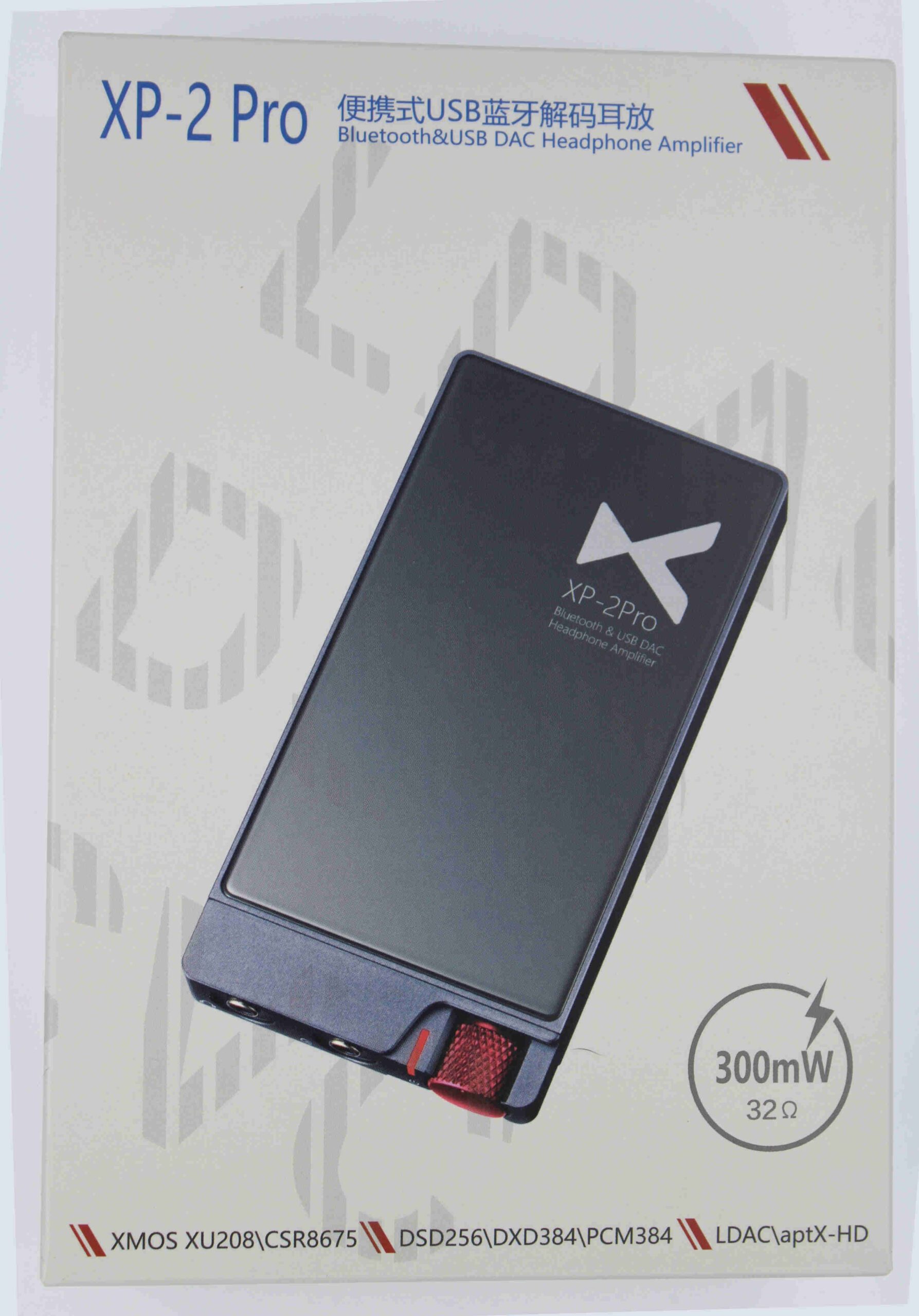
Disclaimer: The XP-2 Pro was provided to me by Xduoo for purposes of this review. I had reviewed the original model and they asked that I see if the new Pro model addressed some of the things I didn’t love about the original. I have received no guidance on content, nor have I received any remuneration for this review. I have no financial interest in Xduoo or any of its subsidiaries. If you have an interest in the XP-2 Pro – check Xduoo’s website.
Unboxing:
The Xp-2 Pro came in very similar packaging to the original. It came double boxed with a white cardboard outer package with graphics on front and details on rear and a black lift-top style inner box done in much more subtle tones. The inner box has a shelf the device rests on and a compartment underneath with the cables and kit hiding in it. The XP-2 comes with a 3.5mm male to male cable, a USB OTG cable (USB-C to USB-C), and a USB-A to USB-C charging cable, a manual, and warranty card. Overall a very familar packaging but one that has good functionality and utility. I do wish it came with either a carry bag or some form of mount for attaching it to a phone.


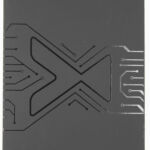


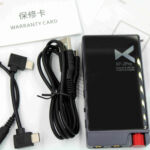
Build:
While build is similar to the original, there are some key differences. USB is updated to USB-C for both power and data connections, the volume knob is now Red (nice touch), and the sides are now glass instead of the original aluminum and does give the Pro a bit more premium feel. Size has not changed and it still is roughly the size of a deck of cards while weight is also roughly that of a full sized deck of cards or maybe a bit heavier. The glass is potentially a bit less durable than the original, but does give the Pro a bit more premium feel. Jacks are countersunk in the face and the volume knob is well protected. I wish I could say the same for the buttons on the side of the player as I did find a tendency to change modes when carrying the player in a pocket and in that respect it is a bit less tactile than the original. The rear has separate USB-C ports for data and charging which allows the device to be connected to a phone via USB without draining the phones battery to power it. While bluetooth has gotten a lot better, it still has trouble rivaling wired connections so having that option gives users the option of using either mode as appropriate. I found the provided cable worked well as did the DDHifi TC05 cable. Those are quickly becoming my favorite C-C OTG cable.
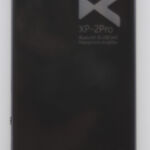

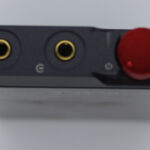


Internals:
The original used a SA9123 USB Controller, a bluetooth chip, and an AKM4452 DAC. On the Pro, the DAC is still the AKM4452 while the op-amps and buffers are stepped up a bit. and op-amps are still OPA1652 and 1622 with the3 LMH6643ma buffer but both the other sub-systems are upgraded. This makes sense as nothing was wrong with the signal path before. Gone is the SA9123 replaced with the Xu208 for handling USB duties, likewise the bluetooth controller is now a CSR8675 for improved connectivity. Battery life is roughly equal between the two so that too seems to be largely unchanged. The changes to the USB have reduced THD and improved capability. While the original was limited to 24/192 and PCM only, the Pro is 32/384 capable and also supports DSD up to and including DSD256. The new Bluetooth controller adds LDAC, AptX HD, and low latency in addition to the SBC,AAC, and AptX of the original. I was able to force my phone into each mode and pair to the Pro and it worked quite well in both AptX HD and LDAC. This is a definite improvement over the original and for those that want to use the Pro as a bluetooth amplifier will find it a vast improvment on the original.
Features:
The Pro doesn’t add any new tricks, nor does it lose any of the function of the original. Its simplest mode is as a wired Amplifier. In this mode, input is via the 3.5mm aux in/out port and output is via the 3.5mm Phone Jack. Xduoo advertises the amp circuit as having ± 5V rails for maximum drive which provides roughly 300mW @ 32Ω. I found the little unit had no problem powering most headphones including the 600Ω Beyer 990 and HD700s. The Pro is obviously more at home with low impedance devices but will work with larger cans as long as sensitivity is fairly high. I tried it with the He6 and it simply is over-matched to the point it couldn’t produce a listenable volume even on high gain. I was not expecting this to work and am in no way surprised it didn’t, but use the example to show others the limits of this device. On low gain, even my most sensitive iems (things like the Magaosi K5) had no hiss to speak of.
Next up, USB DAC Mode. I tested this using the iPhone 10 with a camera connection kit, an LG v40, a Motorola Z3 Play smartphone, and a Surface Pro 4. The Xduoo worked effortlessly with all of them so whatever caused the hiccup between the moto on the original has been resolved. I also tried it paired to the Cayin N3 and Hidiz AP80 as sources and both worked as expected.
Bluetooth mode allows pairing a source device to the Pro and then using the phone or tablet control the device. I found it easiest to set the volume on the Pro itself to as high as I was likely to use and then control all functions from the phone, Others may prefer to adjust the volume via the physical control on the Pro. The Gain switch still works exactly like it does in wired mode as basically all amplifier functions are independent of input type. I can say that the new protocols improved connectivity considerably and I had no issues with drop-outs as long as distances were kept within reason. I found 30-40 feet in open air to be about its limit and a single interior wall presented little problem. Multiple interior walls or a single exterior wall on the other hand defeated it rather quickly. Battery life in bluetooth mode is lessened somewhat, but it was still able to put in an entire workday (8 hours without needing a charge). (When used as a wired amp, I was able to get 2 days out of it before it cut out).
Controls
Like the original, the controls are on the side of the unit with the exception of the on/off/volume knob on the face of the unit with the 3.5mm ports. Looking at the right hand side of the unit from left to right, we have the microphone, yep you read that right, the Bluetooth Pairing button, the gain Switch, and the mode selection switch. The LED has been moved to the face next to the volume knob and now displays blue for Bluetooth, Red for USB input, and Green for Auxillary in. In USB and Bluetooth mode, the LED also works to indicate either connection protocol (BT) or file type in use. With Bluetooth, blinking blue is pairing, solid blue is paired (SBC), Cyan (AAC), purple (AptX (any form)), and white (LDAC). In USB Mode, 44.1/48 PCM is red, 88/96 PCM is cyan, above 96 PCM is purple, and white is DSD.
Microphone
One of the things that can be problematic for users who pair their phone with any audio device is that device becomes the default for taking phone calls as well. With TWS headphones one feature we always look at is the quality of the microphone. With Dac/Amps, the problem is most don’t support microphone pass through and don’t allow use of the mic on an earphone even if it has one. Xduoo came up with a unique solution to this problem. Instead of requiring the user to have earphones with a mic, they built one into the Xp-2 Pro itself so the user can take calls regardless of what headphone is plugged in. I found the microphone to work well as long as the Pro was not in a pants pocket. Sitting on the desk or in a shirt pocket, the mic works fine and is indeed a welcome addition.
Sound
Unlike the original, I found little change in coloration between Bluetooth and wired modes and some of the coloration that was present even in USB mode of the original is gone as well. The XP-2 Pro is very linear as long as load is not too heavy. I did find on 600Ω Beyers and things like the T50rp Variants it sounded a bit rolled off at the low end due to lacking enough output power to really make them happy. When kept to more reasonable pairings, the Pro has good extension on both ends. I did find a very mild lift of the vocals in all modes and a slight smoothing of some of the rough edges of source material. This is not uncommon on the AKM velvet series dacs and is probably a good choice considering this device is an entry level device and will likely be fed a consistent diet of poor source material. Overall I was impressed with the improvements between the original and the Pro when A/B testing the two. That led to the photos below.
Comparison:
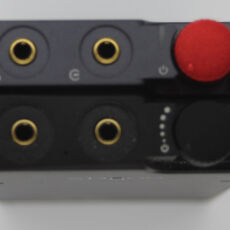

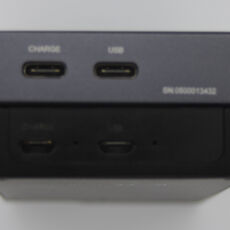
Conclusion
The original XP-2 was a jack of all trades and while quite good, it failed to provide the level of connectivity of some others and it lacked the DSD support and support for high end formats of things like the xDSD. While it is hard to see that as too big a criticism since it was 1/3 the price of a lot of those competitors, those factors combined with some coloration of the sound probably did limit the popularity of the XP-2. Happily Xduoo listened to what users wanted and updated the device to handle all the things that limited the appeal of the original. The Pro offers DSD support including DSD256 and PCM support up to 32/384. Still no MQA, but big improvements none the less. Controls are a bit more intuitive, and the microphone allows the user to pair the Pro to a phone and still take full advantage of the phone itself. One can still take calls, the battery life of the phone is not adversely impacted by using the Pro since it has its own battery and even with the USB connected, the data port is unpowered so won’t tax the source device. What little coloration is present is arguably the fault of the DAC chip itself and for many that same coloration will be welcomed because it means that the Pro will handle poor source material and clean up some of the rough edges. I really liked the original for a budget device, but the Pro I really like regardless of price. Its not quite the TR-amp, but for 1/2 the money its a great option.
Tano
Thanks for that great in depth review, Im getting it this black friday. I need something to use while my Fiio Btr5 is charging and I think this is a really solid option. Hopefully I won't get a unit with the bluetooth flaw as my main use will be that.

